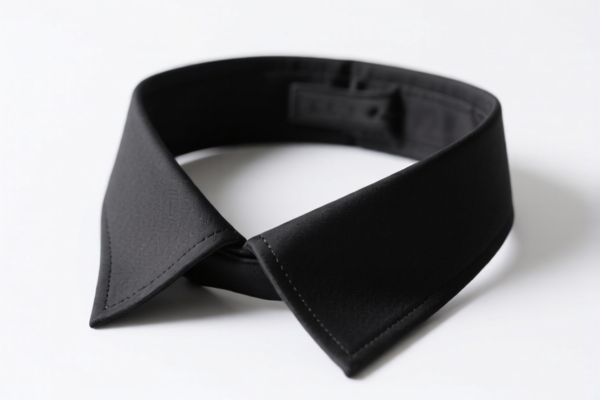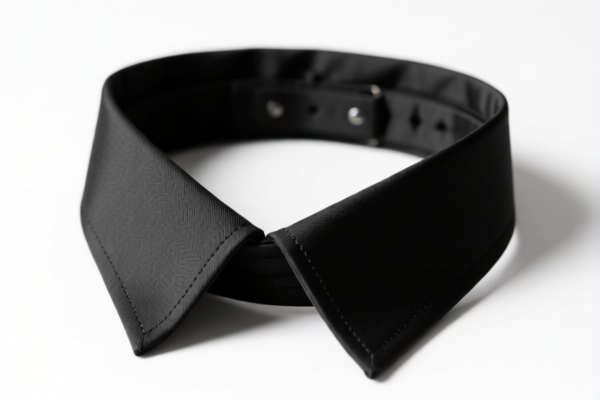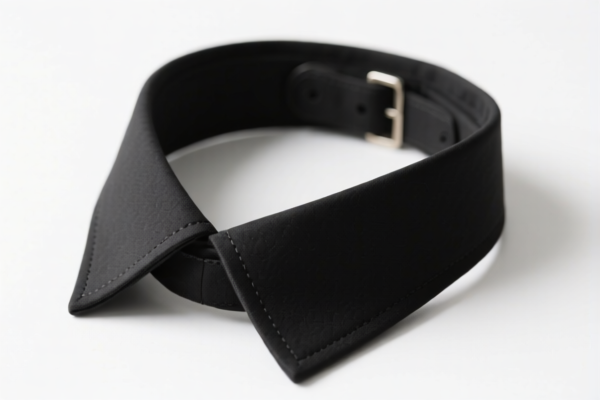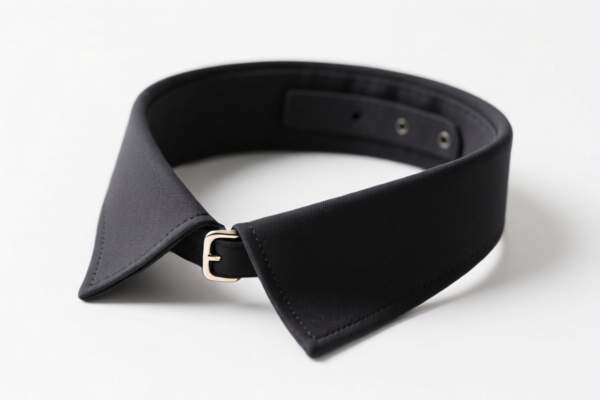| HS Code | Official Doc | Tariff Rate | Origin | Destination | Effective Date |
|---|---|---|---|---|---|
| 6217909003 | Doc | 52.1% | CN | US | 2025-05-12 |
| 6217909010 | Doc | 52.1% | CN | US | 2025-05-12 |
| 4302300000 | Doc | 60.3% | CN | US | 2025-05-12 |
| 4303100030 | Doc | 59.0% | CN | US | 2025-05-12 |
| 4303100060 | Doc | 59.0% | CN | US | 2025-05-12 |
| 6117909003 | Doc | 52.1% | CN | US | 2025-05-12 |
| 6117909005 | Doc | 52.1% | CN | US | 2025-05-12 |




Collars
Collars are a loop or band worn around the neck of humans or animals. They serve diverse purposes, ranging from fashion and identification to functionality and restraint.
Materials
Collars are constructed from a wide array of materials, selected based on intended use and aesthetic preferences:
- Leather: Durable and classic, often used for pet collars, fashion accessories, and historical garments.
- Fabric: Cotton, nylon, polyester, and other textiles are common for pet collars, dress shirts, and decorative purposes.
- Metal: Used for choke chains (dog training), decorative elements, or rigid structural collars.
- Plastic/Synthetic Polymers: Lightweight and affordable, frequently used for pet identification tags and basic pet collars.
- Chain: Primarily used for dog training, or as a fashion statement.
- Spiked/Studded Materials: Often leather or synthetic, used for fashion or perceived protective purposes.
Purpose & Function
The function of a collar varies significantly:
- Pet Identification: Most commonly used to hold identification tags with owner contact information.
- Leash Attachment: Enables control and guidance of animals during walks or training.
- Training: Specialized collars (choke chains, prong collars, electronic collars) are used for behavior modification, though ethical considerations are paramount.
- Fashion: Decorative collars are worn as accessories, often complementing clothing styles.
- Historical/Ceremonial: Historically, collars indicated status, profession, or membership in specific groups. Ruffs were elaborate lace or pleated collars worn in the 16th and 17th centuries.
- Protection: Rigid collars (e.g., Elizabethan collars, also known as "cones of shame") prevent animals from accessing wounds or surgical sites.
- Restraint: Used in certain professional contexts (e.g., animal handling) to provide secure control.
Usage Scenarios
- Pet Ownership: Daily wear for dogs and cats, essential for walks, identification, and safety.
- Fashion & Apparel: As a component of clothing styles, enhancing aesthetics and personal expression.
- Animal Training: Behavior modification and obedience training (requires responsible and ethical application).
- Veterinary Medicine: Post-operative care to prevent self-inflicted injury.
- Professional Animal Handling: Control and safety during procedures or transportation.
- Security/Law Enforcement: Used with working dogs for identification and control.
Common Types
- Flat Collars: Basic, widely used for everyday wear and identification tags.
- Buckle Collars: Secure with a buckle closure, offering adjustability.
- Martingale Collars (Limited-Slip Collars): Tighten when the animal pulls, providing more control without choking. Commonly used for breeds with narrow heads.
- Choke Chains: Metal chains used for training, requiring careful and knowledgeable application.
- Prong Collars: Feature metal prongs that apply pressure when the animal pulls, used for training (requires professional guidance).
- Electronic Collars (E-Collars): Deliver static correction, vibration, or sound to modify behavior (requires professional guidance and ethical consideration).
- Breakaway Collars: Designed to release if caught on an object, enhancing safety for cats and other animals.
- Ruffs: Elaborate, historical collars made of lace or pleated fabric.
- Elizabethan Collars (Cones of Shame): Prevent animals from accessing wounds.
- Studded/Spiked Collars: Fashion accessories, often leather.
- GPS Collars: Contain tracking technology for locating pets or animals.
Collars fall under the category of “Other made up clothing accessories; parts of garments or of clothing accessories, other than those of heading 6212”. Several HS codes may be applicable depending on the material of the collar.
Here are the relevant HS codes found within the provided reference material:
- 6217909003: This HS code covers “Parts: Other Of blouses and shirts: Of cotton (341)”. This applies to collars specifically designed as parts for blouses and shirts, made of cotton. The first two digits (62) indicate Chapter 62, which covers articles of apparel and clothing accessories, not knitted or crocheted. The next four digits (1790) specify “Other made up clothing accessories; parts of garments or of clothing accessories, other than those of heading 6212”. The final digits (9003) further define the product as parts of blouses and shirts, made of cotton.
- 6217909010: This HS code covers “Parts: Other Of blouses and shirts: Of man-made fibers (641)”. This applies to collars specifically designed as parts for blouses and shirts, made of man-made fibers. The first two digits (62) indicate Chapter 62, which covers articles of apparel and clothing accessories, not knitted or crocheted. The next four digits (1790) specify “Other made up clothing accessories; parts of garments or of clothing accessories, other than those of heading 6212”. The final digits (909010) further define the product as parts of blouses and shirts, made of man-made fibers.
- 6117909003: This HS code covers “Parts: Other Of sweaters: Of cotton (345)”. This applies to collars specifically designed as parts for sweaters, made of cotton. The first two digits (61) indicate Chapter 61, which covers articles of apparel and clothing accessories, knitted or crocheted. The next four digits (1790) specify “Other made up clothing accessories, knitted or crocheted; knitted or crocheted parts of garments or of clothing accessories”. The final digits (9003) further define the product as parts of sweaters, made of cotton.
- 6117909005: This HS code covers “Parts: Other Of sweaters: Of wool or fine animal hair (446)”. This applies to collars specifically designed as parts for sweaters, made of wool or fine animal hair. The first two digits (61) indicate Chapter 61, which covers articles of apparel and clothing accessories, knitted or crocheted. The next four digits (1790) specify “Other made up clothing accessories, knitted or crocheted; knitted or crocheted parts of garments or of clothing accessories”. The final digits (9005) further define the product as parts of sweaters, made of wool or fine animal hair.
Regarding these HS codes, please note that the total tax rate is 52.1% for 6217909003, 6217909010, 6117909003 and 6117909005, comprising a base tariff of 14.6%, an additional tariff of 7.5%, and an additional tariff of 30.0% effective April 2, 2025.
Customer Reviews
No reviews yet.